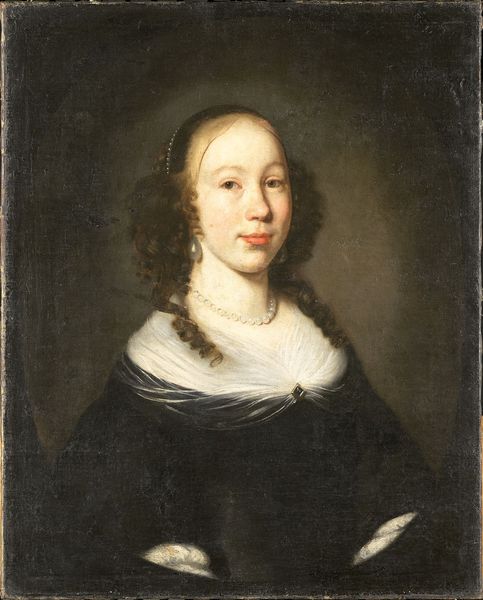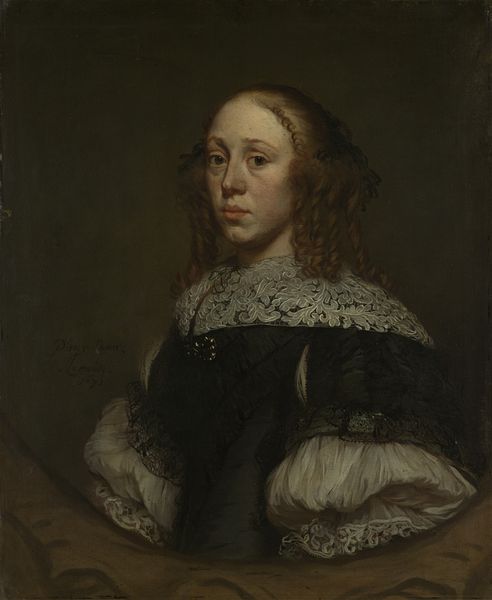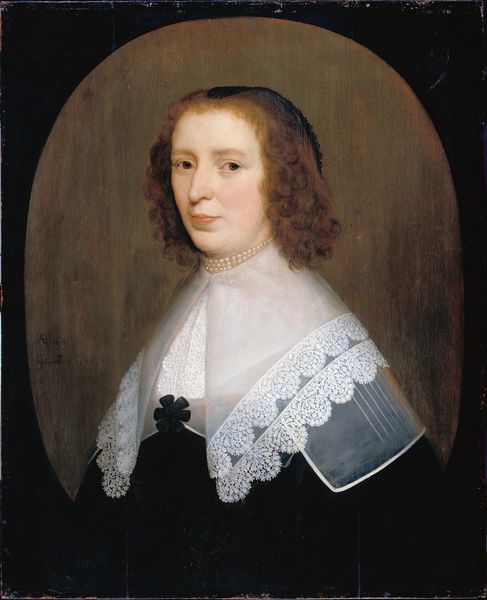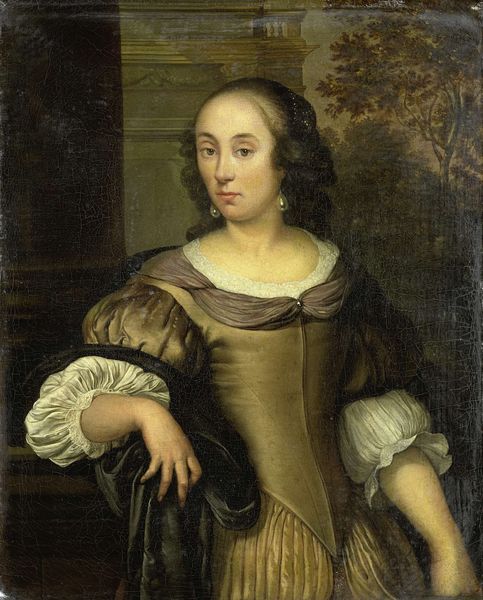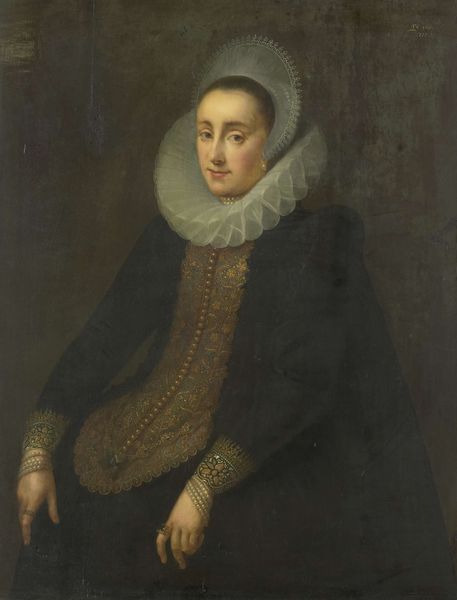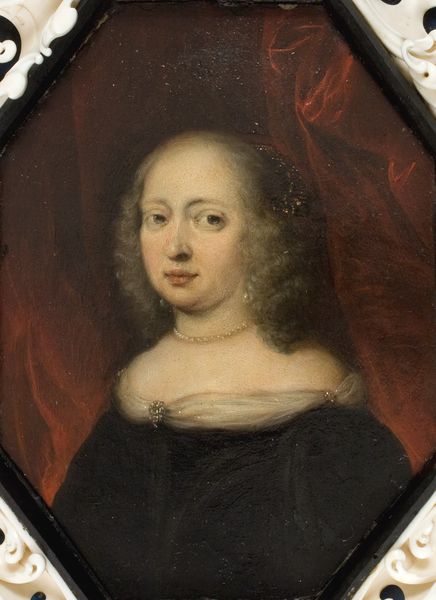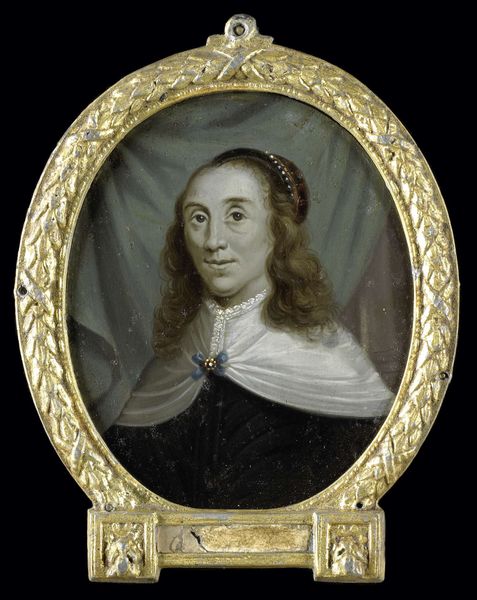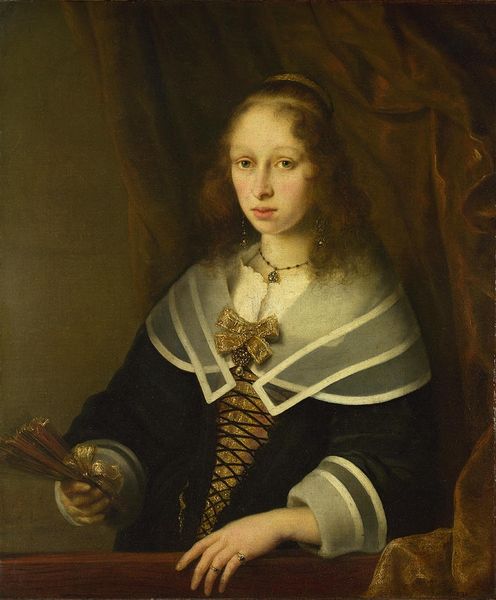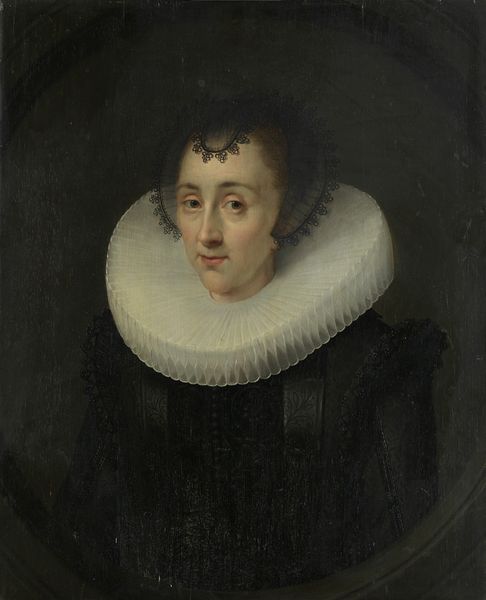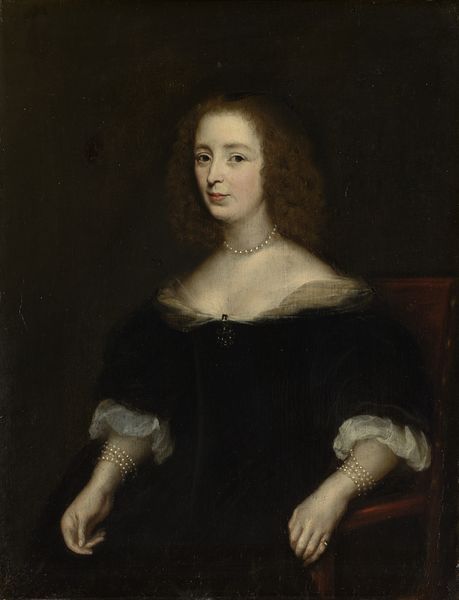
Portrait of Digna de Maets. First Wife of François Leydecker 1640 - 1654
0:00
0:00
oil-paint
#
baroque
#
dutch-golden-age
#
oil-paint
#
oil painting
#
portrait art
#
realism
Dimensions: height 75 cm, width 60 cm, depth 9 cm
Copyright: Rijks Museum: Open Domain
Curator: The woman portrayed here is Digna de Maets, the first wife of François Leydecker, painted by Bernardus Swaerdecroon between 1640 and 1654. It's an oil painting, typical of the Dutch Golden Age. Editor: My first impression is how subdued the palette is. The light seems to struggle against the darkness, creating this compelling visual tension. Curator: Indeed, the contrasting tones exemplify Baroque sensibilities. Swaerdecroon utilized oil to build up layers, a process allowing for subtle gradations in her face, hinting at her social standing within the burgeoning merchant class. It is evident that oil paint, easily acquired at the time, was essential to artists in cementing the era’s emphasis on realism and portraiture as a display of social identity and status. Editor: Absolutely, and look at how that interplay of light and shadow defines her facial features. The composition draws our attention to her face and delicate detailing. Curator: Right, let’s consider the broader context. Digna de Maets belonged to a class deeply impacted by shifts in maritime trade and colonialism. As wives and mothers, they were vital to perpetuating family wealth. Editor: You can feel this domestic and modest tone as you examine her expression. The way her eyes meet the viewer is compelling, almost confronting within that oval frame. Curator: Well, the use of the oval frame was itself a common strategy, emphasizing the sitter’s status, don't you think? It becomes a framing mechanism, isolating the wealthy from common life, literally containing the family and their property. It speaks volumes of consumption at that moment in time. Editor: I think there is a delicate tension to this aesthetic treatment as well as her pose, creating an approachable, yet also self-contained representation. Her quiet elegance echoes throughout her pale and delicate countenance. Curator: Her cape, constructed meticulously, echoes the emphasis on local industry at this point in Dutch Golden Age history. Her garment speaks directly of available resources. Editor: Looking at the work in totality, the execution here provides more than a depiction. It resonates beyond the confines of its context, and strikes an unexpectedly enduring tone. Curator: Perhaps, yes. By understanding the social dynamics surrounding Digna de Maets, this work indeed achieves an additional resonance, creating not merely a figure, but a time capsule for all viewers who approach it in the present.
Comments
No comments
Be the first to comment and join the conversation on the ultimate creative platform.
